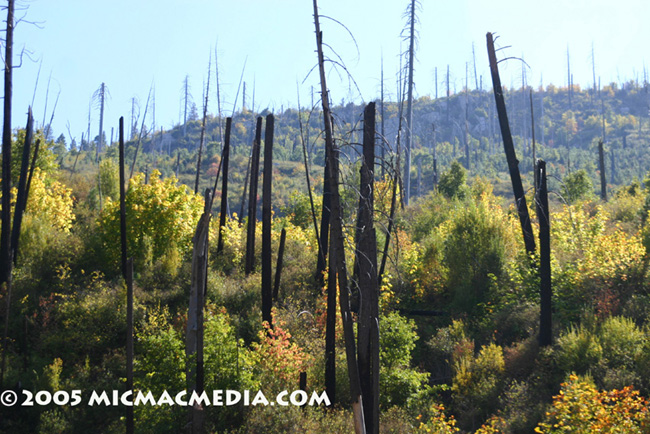|
Tahoe Nugget #18:
Cleveland Fire regrowth
In the arid West, there are actually five seasons: winter, spring, summer, fall, and fire season. Much of California has a Mediterranean
type climate which features hot, dry summers and cool moist winters. The June to October dry season produces ideal conditions for forest fires. Wildfires that burn toward the end of the dry season are intense,
resist suppression efforts and threaten lives, property and resources. In September 1992, a wildfire broke out along the American River just southwest of Lake Tahoe. The "Cleveland Fire" burned more than
24,000 acres in two days, destroyed over 40 homes and claimed the lives of two aircraft pilots.
The Cleveland fire was considered a disaster, but wildfires actually play an integral part in forest ecology, a natural evolutionary force
that has influenced Sierran ecosystems for millennia. Wildland fire hazards have increased substantially in California as a consequence of historical fire suppression and past timber harvesting practices. This photo
along the American River burn area shows the forest making a resounding comeback.

|



